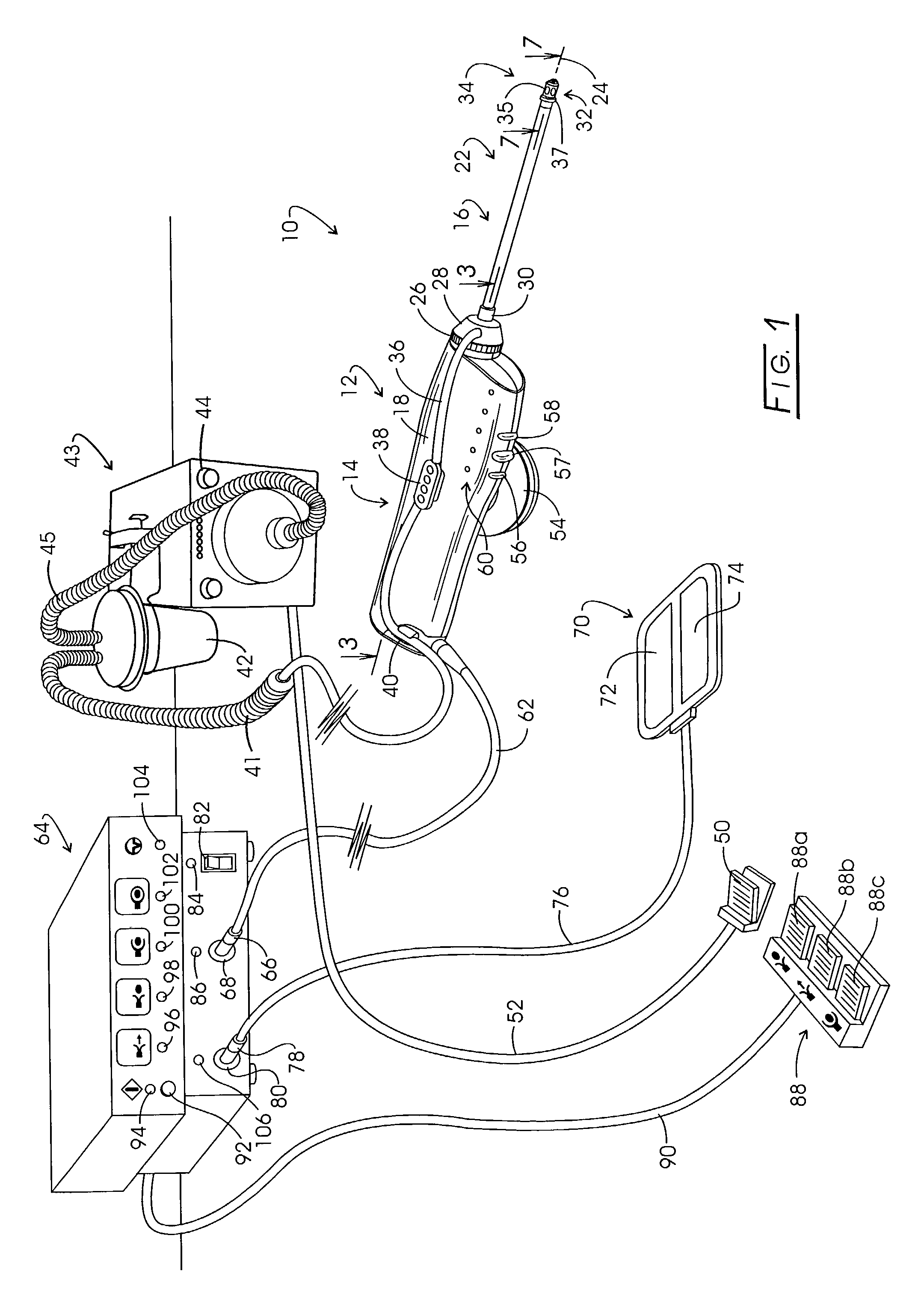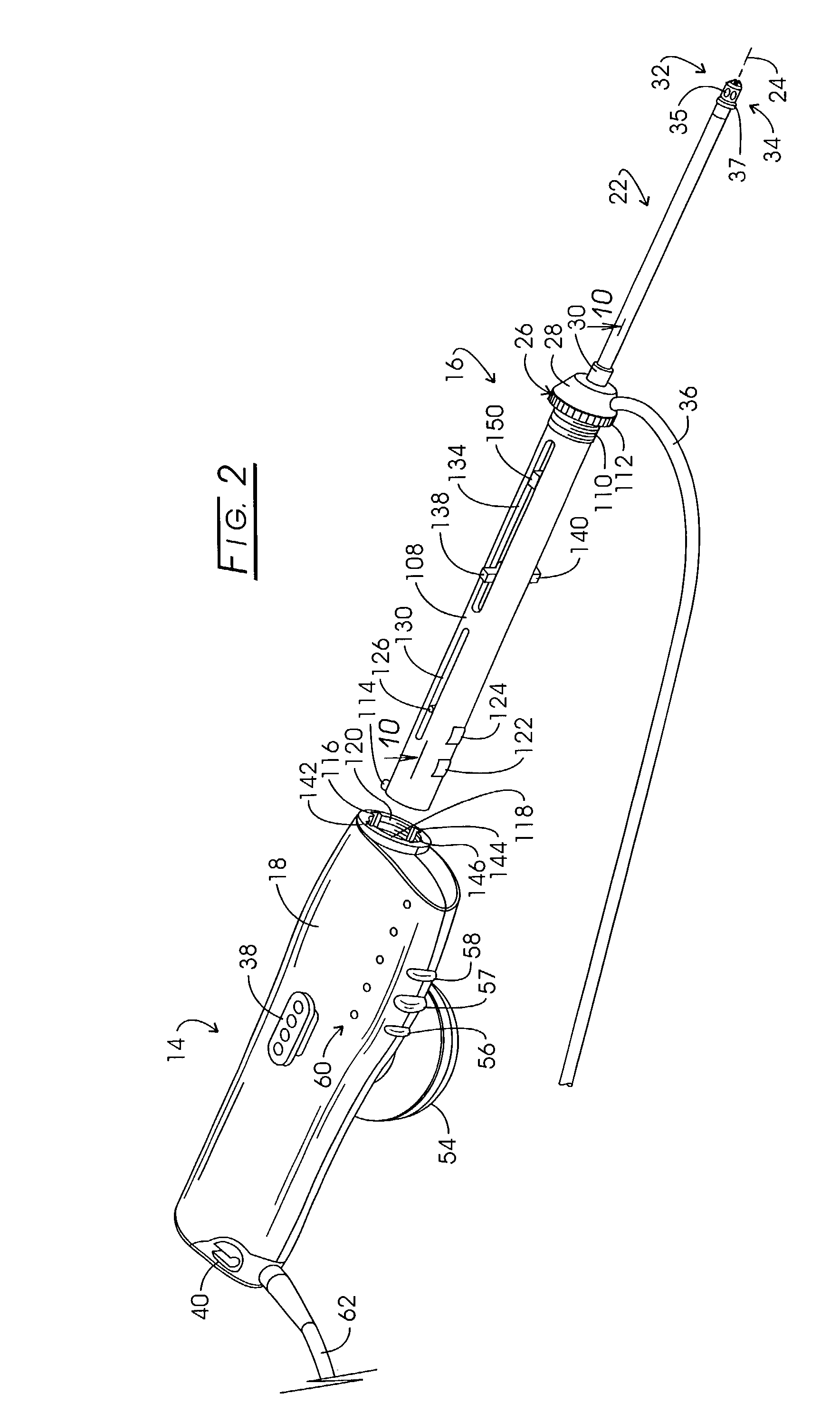Electrosurgery with infiltration anesthesia
anesthesia and electrosurgical technology, applied in the field of electrosurgical generator shutdown, can solve the problems of high conductivity of conventional diluent, low electrical resistance of involved tissue, and electrosurgical generator shutdown
- Summary
- Abstract
- Description
- Claims
- Application Information
AI Technical Summary
Benefits of technology
Problems solved by technology
Method used
Image
Examples
experiment 1
[0172
[0173]For the resistance measurements carried out in connection with experiments 1–7 a resistance measuring needle was,prepared. The needle was formed of type 304 stainless steel, 24 gauge and 1½ inches in length. An electrically insulative cannula was positioned over the shank of the needle to the vicinity of the commencement of the point. The cannula was formed of 0.6 mil shrink tubing and the arrangement provided for a 3–4 millimeter exposed steel tip for resistance evaluation. The needle was coupled with a syringe for the injection of local anesthesia, and the animal employed was a fully anesthetized 366 pound female pig positioned on its back. This testing needle was electrically coupled with a Fluke-type PM6306RLC meter, the adjustable frequency of which was established at 34.0 kHz. The meter was additionally attached to a return provided as a Erbe Nessy Plate-type 170 having an area of 168 square centimeters. This dispersive return was positioned upon the chest of the pi...
experiment 2
[0176
[0177]
M.W.J.5:55 pmLocal anesthesia:(1%) with Epinephrine 1:200,000in normal salineVolume:3.5 ccMinimum resistance:149 ohms
[0178]
TABLE 2Time from injectionof anesthetic insecondsResistance in ohms030415172301774518160(1 min)18490188120(2 min)190180(3 min)197240(4 min)202300(5 min)207360(6 min)212420(7 min)216480(8 min)219540(9 min)221600(10 min)22411min22512min226
experiment 3
[0179
[0180]In addition to carrying out resistance measurements with the anesthetic injecting needle referred to as “over bolus” a second resistance measuring needle was injected at a position 2 cm spaced from the bolus injecting needle.[0181]Readings at the second needle as tabulated below were made following about a five second delay from the readings made with the first fluid injecting needle to permit appropriate electrical connection with the Fluke meter.
[0182]
M.W.J.6:23 pmLocal anesthesia:(1%) with Epinephrine 1:200,000in normal salineVolume:3 ccMinimum resistance(over bolus) 135 ohms
[0183]
TABLE 3Time from injectionof anesthetic inResistance overResistance atsecondsbolus in ohms2 cm in ohms0332304151462883014928760(1 min)15228790153286120(2 min)154284180(3 min)155283240(4 min)157281300(5 min)157279360(6 min)159279420(7 min)160278480(8 min)160278540(9 min)161.6276.6600(10 min)160.8279.812min16227630min168265
PUM
 Login to View More
Login to View More Abstract
Description
Claims
Application Information
 Login to View More
Login to View More - R&D
- Intellectual Property
- Life Sciences
- Materials
- Tech Scout
- Unparalleled Data Quality
- Higher Quality Content
- 60% Fewer Hallucinations
Browse by: Latest US Patents, China's latest patents, Technical Efficacy Thesaurus, Application Domain, Technology Topic, Popular Technical Reports.
© 2025 PatSnap. All rights reserved.Legal|Privacy policy|Modern Slavery Act Transparency Statement|Sitemap|About US| Contact US: help@patsnap.com



